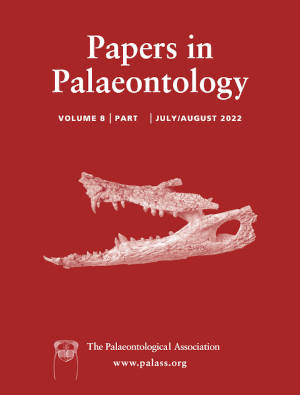Article: The skeletal taphonomy of anurans from the Eocene Geiseltal Konservat-Lagerstätte, Germany: insights into the controls on fossil anuran preservation
Publication: Papers in Palaeontology
Volume:
8
Part:
4
Publication Date:
2022
Article number:
e1453
Author(s):
Daniel Falk, Oliver Wings, and Maria E. McNamara
DOI:
10.1002/spp2.1453
Abstract
Abstract The Geiseltal biota is an Eocene lacustrine Konservat-Lagerstätte in central Germany. Despite its rich fauna and flora (over 50 000 fossil vertebrates, insects and other invertebrates, plants and trace fossils) the taphonomy of the biota, and of the anurans in particular, is poorly understood. We analysed the skeletal taphonomy of 168 anurans, scoring each specimen for orientation, completeness and articulation. Most are partial skeletons, truncated during preparation. This process introduces measurable artefacts into the taphonomic data, which requires further study. We identified recurring taphonomic states, including disarticulation or loss of abdominal bones, loss of one or more limbs, extensive disarticulation, and extensive loss of elements across the body. Relatively rare states include: loss of distal limb elements only, scattered bones, and isolated, articulated limbs. These data inform a new taphonomic model for the Geiseltal anurans. Comparative analysis of patterns in completeness and articulation in these specimens and anurans from other Cenozoic Lagerstätten reveals repeated patterns in preservation in lacustrine-hosted settings, such as proximal to distal trends in completeness, preferential loss of small peripheral bones, disarticulation of abdominal bones, and reorientation of major body regions. Taphonomic controls in lacustrine systems are surface water temperature, lake depth, vegetation, exposure to bottom currents, transport mechanisms, scavenging, decay regime, bone size and location in the skeleton; all ultimately controlled by palaeoclimate, lake physiography and hydrology, and anuran anatomy. A universal approach to quantitative analysis of skeletal taphonomy metrics will enable comparative testing of the relationship between preservation and palaeoenvironment for diverse fossil vertebrates.
